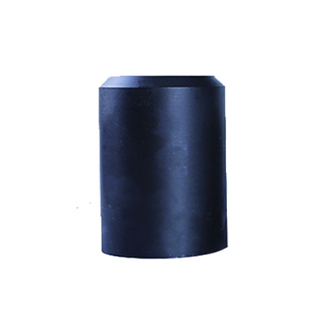- Afrikaans
- Albanian
- Amharic
- Arabic
- Armenian
- Azerbaijani
- Basque
- Belarusian
- Bengali
- Bosnian
- Bulgarian
- Catalan
- Cebuano
- Corsican
- Croatian
- Czech
- Danish
- Dutch
- English
- Esperanto
- Estonian
- Finnish
- French
- Frisian
- Galician
- Georgian
- German
- Greek
- Gujarati
- Haitian Creole
- hausa
- hawaiian
- Hebrew
- Hindi
- Miao
- Hungarian
- Icelandic
- igbo
- Indonesian
- irish
- Italian
- Japanese
- Javanese
- Kannada
- kazakh
- Khmer
- Rwandese
- Korean
- Kurdish
- Kyrgyz
- Lao
- Latin
- Latvian
- Lithuanian
- Luxembourgish
- Macedonian
- Malgashi
- Malay
- Malayalam
- Maltese
- Maori
- Marathi
- Mongolian
- Myanmar
- Nepali
- Norwegian
- Norwegian
- Occitan
- Pashto
- Persian
- Polish
- Portuguese
- Punjabi
- Romanian
- Russian
- Samoan
- Scottish Gaelic
- Serbian
- Sesotho
- Shona
- Sindhi
- Sinhala
- Slovak
- Slovenian
- Somali
- Spanish
- Sundanese
- Swahili
- Swedish
- Tagalog
- Tajik
- Tamil
- Tatar
- Telugu
- Thai
- Turkish
- Turkmen
- Ukrainian
- Urdu
- Uighur
- Uzbek
- Vietnamese
- Welsh
- Bantu
- Yiddish
- Yoruba
- Zulu
Compression Tubing Couplers for Efficient Fluid Connection in Piping Systems
Understanding Compression Tubing Couplers Applications and Benefits
In various industrial and plumbing applications, the need for secure and efficient connections between tubing is paramount. One of the most effective solutions for achieving these necessary connections is the compression tubing coupler. This device not only ensures that the tubing is connected securely but also maintains the integrity of the flow within various systems, from fluid transport to pneumatic mechanisms. In this article, we will explore what compression tubing couplers are, how they function, and their numerous applications and benefits.
What is a Compression Tubing Coupler?
A compression tubing coupler is a mechanical device designed to join two lengths of tubing together. Typically made from durable materials such as brass, stainless steel, or plastic, compression couplers are engineered to provide a leak-proof connection between pipes or tubes of similar or different diameters. The design of a compression coupler usually includes a nut, a compression ring (often called a ferrule), and the body of the coupler itself.
When the nut is tightened onto the body of the coupler, it compresses the ferrule around the tubing. This action creates a tight seal, preventing any potential leaks while allowing the transmitted fluid or gas to flow unencumbered. The versatility of these couplers accommodates various tubing types, including rigid and flexible plastics, copper, and other metals.
How Do Compression Tubing Couplers Work?
The operation of a compression tubing coupler is relatively straightforward. To make a connection
1. Cut the Tubing First, the end of each tubing section must be cut cleanly and squared to ensure a proper seal.
2. Insert the Tube into the Coupler The tubing ends are then inserted into the coupler's respective ends.
3. Tighten the Nut A wrench is typically used to tighten the compression nut over the ferrule. As the nut is turned, it pulls the ferrule down against the tubing, compressing it to form a tight seal.
4. Check for Leaks After assembly, it’s common to test the connection for leaks by applying pressure to the system.
This installation method does not require specialized tools or welding, making it an accessible option for both professionals and DIY enthusiasts.
Applications of Compression Tubing Couplers
compression tubing coupler

Compression tubing couplers are widely used across many sectors
- Plumbing They are commonly utilized in residential and commercial plumbing systems to connect various pipes, ensuring that water and waste flow seamlessly.
- HVAC Systems In heating, ventilation, and air conditioning systems, these couplers facilitate connections in refrigerant lines and condensate drains.
- Industrial Applications Many manufacturers use compression couplers in equipment and machinery, especially where hydraulic or pneumatic systems are involved.
- Medical Equipment In the medical field, these couplers connect various tubing systems used in equipment like IV drips and respiratory devices, where cleanliness and sterility are crucial.
Benefits of Using Compression Tubing Couplers
1. Easy Installation One of the main advantages of compression couplers is their straightforward installation process, requiring minimal tools and skill.
2. Versatility They can connect tubing made from various materials, making them suitable for a wide array of applications.
3. Leak Prevention The design of the coupler ensures that once installed, the connection is secure and leak-free—a critical factor in any system that relies on fluid or gas flow.
4. Reusability Unlike some permanent connections that may need to be cut out for removal, compression couplers can be easily dismantled and reused, promoting sustainability and cost-effectiveness.
5. Durability Made from robust materials, compression couplings can withstand high pressures and are resistant to corrosion, enhancing their lifespan and reliability.
Conclusion
Compression tubing couplers are an invaluable component in many fields where secure and leak-proof tubing connections are essential. Their ease of use, versatility, and reliability contribute significantly to their popularity. Whether in plumbing, HVAC systems, industrial applications, or medical equipment, these couplers provide a simple solution to complex connection challenges, ensuring efficient and effective operation across varied systems. By understanding and utilizing compression tubing couplers, industries can improve their operational efficiency and maintain high standards in safety and performance.
-
Tubing Pup Joints: Essential Components for Oil and Gas OperationsNewsJul.10,2025
-
Pup Joints: Essential Components for Reliable Drilling OperationsNewsJul.10,2025
-
Pipe Couplings: Connecting Your World EfficientlyNewsJul.10,2025
-
Mastering Oilfield Operations with Quality Tubing and CasingNewsJul.10,2025
-
High-Quality Casing Couplings for Every NeedNewsJul.10,2025
-
Boost Your Drilling Efficiency with Premium Crossover Tools & Seating NipplesNewsJul.10,2025







